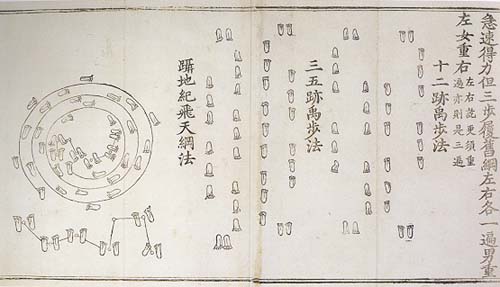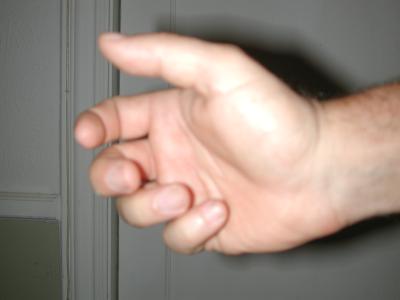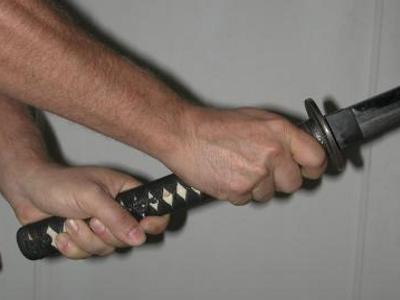The Whirling Circles of Ba Gua Zhang (Part 4)
/The chapter can be summarized like this: Dong Haichuan and Liu Hung Chieh both studied with some unnamed Daoists and Daoists do meditation. Baguazhang practitioners do sitting, standing, and walking meditation, which must have come from these unnamed Daoists. See the problem yet?
In the second paragraph we read:
Apparently, these Daosits looked to their predecessors--the shaman founders of Chinese culture--for some of the patterns of their moving meditations. Some of the oldest texts relating to the study of the Dao have chronicled a few of the dance patterns of the legendary Yu, mythical father of Chinese Shamanism. The patterns of many of these Shamanistic practices were circles and spirals.
The connection of the Dance of Yu to baguazhang is one of those big multi-layered topics for another day. But I can at least point out what the authors don't; Da Yu (the Great Yu) was an exorcist. The reason he is considered the founder of Chinese culture is because 4000 years ago he toured the known world (the whole country) performing the first national exorcisms.

I grew up around a lot of Cantonese speaking kids. When they got mad they would shout "Fuk Da Yu!" which sounded so much like F--k Y-u! that we had a lot of fun saying it. It turns out that they were saying "A curse upon your ancestors." Yu is the mythic ancestor of all Chinese and his name has actually come to mean "ancestor!"
The authors present Professor Kang Gewu's thesis that the roots of baguazhang are to be found in a circle walking practice of the Longmen sect. The concept of "secularism" does not translate very well into Chinese. For instance, Catholicism and Protestantism have often been viewed by Chinese as completely different religions. The idea that Daoism has sects is foreign to Daoism itself. This notion adds somewhat to the confusion about baguazhang's daoist roots. If it's possible to be ordained in a Quanzhen monastery, go and study ritual with a Tianshi householder, and then go live in a Zhengyi hermit enclave on Mao Mountain--then these categories don't meet the definition of sects.
To the authors credit, Longmen (Dragon gate) is correctly identified as a later Daoist lineage (1656) of the Qing Dynasty which merged with Confucianism and promoted a public code of conduct for lay practitioners. (I think of it as decaf-Daoism. It would be very hard to figure out why people drink coffee everyday if the only kind you had ever tried was decaf.)

That's most of what the authors have to say about Daoism. At one point they describe the meditative goal of circle walking as, to "make heaven and earth reside within one's own body," thus joining our inner world with the outer world to become "One with the Dao." Thanks for that. Basic Chinese cosmology posits that we are a temporary contract between Heaven and Earth to hang out in a body for, give or take, 80 years. How does walking in a circle make that more or less true?
In the second half of this chapter, the authors describe in detail a method of "dissolving" taught by B.K. Frantzis. The method described here is great. The problem is that without contextualization, without some grasp of the view which inspired this method, there is a very high probability that the fruition of practice will be overlooked. (And that appears to be what happened.)
The method they describe has the goal of clearing "energy blockages" from the body so that we can store unlimited amounts of qi. I'm deeply familiar with this method but I don't personally like to think of myself as being full of energy blockages, whatever that means. Frankly, the method is not very important.
My intension is not to sound dismissive, by all means, clear out those energy blocks! But taking a step back, isn't that what I am-- a big old energy blockage. To all my fellow energy blockages out there (this means you, dear reader) I say this: Respect yourself, lighten up, and trust your experience. You'll figure it out.
Buy it From Amazon

 something different. Here is a fun one (#33). The Chinese title is "not-two-natural-principle" The authors' translated it "Accuracy Method.":
something different. Here is a fun one (#33). The Chinese title is "not-two-natural-principle" The authors' translated it "Accuracy Method.": Here I continue my commentary on The
Here I continue my commentary on The  I stopped at a gas station in the middle of nowhere on the way to the mountains last month. I checked the oil and it was pretty low so I bought a couple of quarts. I worked in a gas station when I was 14 so I know some tricks for getting a good grip, but my engine was really hot and the oil cap wouldn't budge. I went looking around in my trunk for someway to get more leverage and came up empty. I felt my manhood was being challenged. Just then a thick stocky man, about 6 inches shorter than me said, "Can I give you a hand." I'm sure I looked embarrassed but then I looked at his hands and they were clearly twice the size of mine, his fingers were as thick as cigars. "Sure, uhh...thanks" I said, and he unscrewed it. I asked where he got such huge hands and he said it was his Scottish ancestry.
I stopped at a gas station in the middle of nowhere on the way to the mountains last month. I checked the oil and it was pretty low so I bought a couple of quarts. I worked in a gas station when I was 14 so I know some tricks for getting a good grip, but my engine was really hot and the oil cap wouldn't budge. I went looking around in my trunk for someway to get more leverage and came up empty. I felt my manhood was being challenged. Just then a thick stocky man, about 6 inches shorter than me said, "Can I give you a hand." I'm sure I looked embarrassed but then I looked at his hands and they were clearly twice the size of mine, his fingers were as thick as cigars. "Sure, uhh...thanks" I said, and he unscrewed it. I asked where he got such huge hands and he said it was his Scottish ancestry.


 hand doesn't usually close.
hand doesn't usually close. is painful to hold a solid, tightly packed fist for five minutes unless your technique is good. If it hurts, it is wrong (the spirits have left the body.)
is painful to hold a solid, tightly packed fist for five minutes unless your technique is good. If it hurts, it is wrong (the spirits have left the body.) Here is a concept from Chinese Medicine which has a lot of currency for internal martial artists.
Here is a concept from Chinese Medicine which has a lot of currency for internal martial artists. Imagine you are a wolf, or some other predator, who is absolutely terrified. Not just passing fear, but the kind of fear that colors everything. Tree branches could fall on you at at any moment, the sun burns and dehydrates, the night freezes. Even the air you breath is frightening.
Imagine you are a wolf, or some other predator, who is absolutely terrified. Not just passing fear, but the kind of fear that colors everything. Tree branches could fall on you at at any moment, the sun burns and dehydrates, the night freezes. Even the air you breath is frightening. One of the biggest challenges of being a teacher is that students are always trying to get me to equivocate. For instance, I say, "Practice standing completely still for one hour early in the morning, everyday, before you eat breakfast."
One of the biggest challenges of being a teacher is that students are always trying to get me to equivocate. For instance, I say, "Practice standing completely still for one hour early in the morning, everyday, before you eat breakfast." toward them. I know of an old Gongfu master who worked bank security and kept a bit of metal-filings dust in his pocket to throw in peoples eyes if necessary. Better hope your blink reflex is operating if that happens. Taken to a possessed extreme, these are the bug eyes we sometimes see on crazy people.
toward them. I know of an old Gongfu master who worked bank security and kept a bit of metal-filings dust in his pocket to throw in peoples eyes if necessary. Better hope your blink reflex is operating if that happens. Taken to a possessed extreme, these are the bug eyes we sometimes see on crazy people. As most readers know, when we practice baguazhang we walk a circle, sometimes around a tree or a pole. If one is practicing different ways of changing direction on the circle, as opposed to a form or routine, we call this "practicing the changes" or practicing "palm changes."
As most readers know, when we practice baguazhang we walk a circle, sometimes around a tree or a pole. If one is practicing different ways of changing direction on the circle, as opposed to a form or routine, we call this "practicing the changes" or practicing "palm changes." in. This is a subtle but important distinction. Usually when we walk toward someone we have a sense of our body getting closer to them, predator eyes are intrusive.
in. This is a subtle but important distinction. Usually when we walk toward someone we have a sense of our body getting closer to them, predator eyes are intrusive. which means they focus intently on a point and then whip around to see that point again. One can also whip around from a point to another pre-chosen point. In North Indian Classical Dance we would "spot" on all four walls, spinning one and a quarter turn between each split-second turn. This cool effect was sometimes used to create the illution of a multi-armed, multi-headed deity.")
which means they focus intently on a point and then whip around to see that point again. One can also whip around from a point to another pre-chosen point. In North Indian Classical Dance we would "spot" on all four walls, spinning one and a quarter turn between each split-second turn. This cool effect was sometimes used to create the illution of a multi-armed, multi-headed deity.")